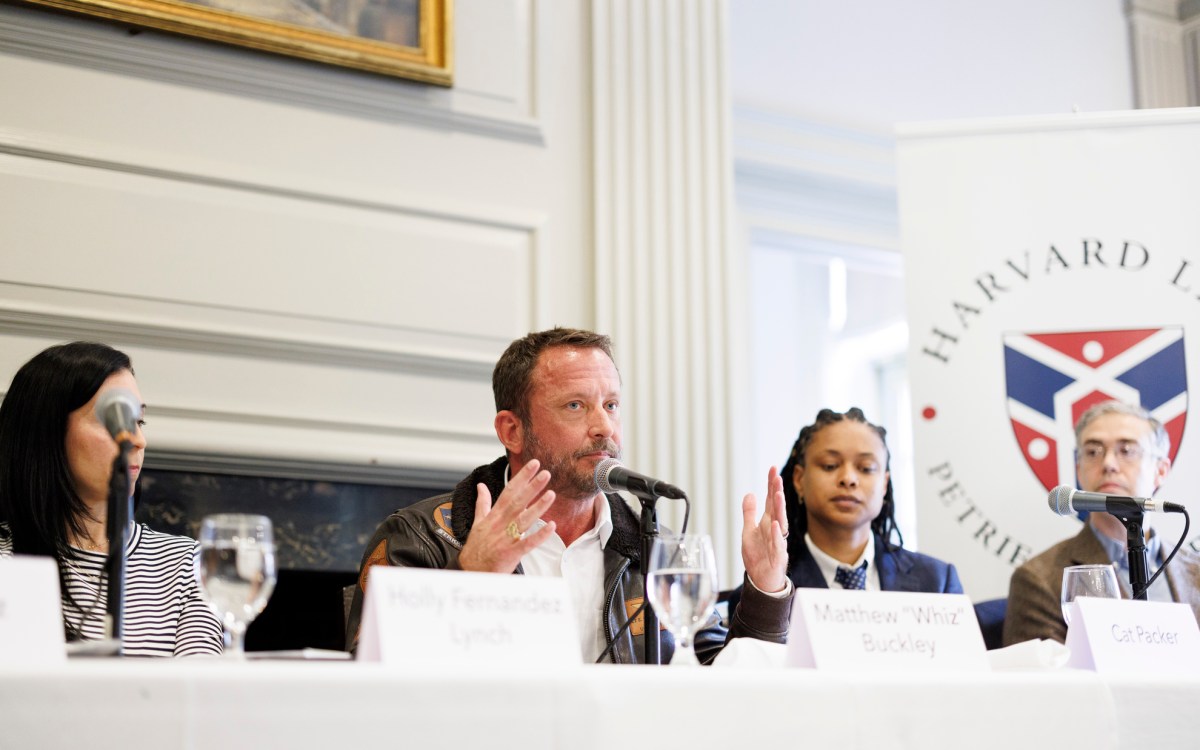NIH awards Harvard Medical School $117.5 million, five-year grant for patient-centered research
Establishment of Clinical and Translational Science Center will unite HMS, hospitals, and schools
The National Institutes of Health today announced that Harvard Medical School (HMS) will receive $117.5 million over the next five years for the establishment of a Clinical and Translational Science Center (CTSC) that will transform patient-oriented, laboratory-to-bedside research at HMS and its affiliated hospitals.
Harvard University, HMS, and a number of the affiliated hospitals are committing additional funds to this unprecedented effort, bringing to about $38.5 million per year the amount that will be invested in focusing on advancing and coordinating patient-centered research across the entire disparate Harvard system. Not only will the effort include the Harvard science and medical community, but it will also bring to bear the expertise and resources of Harvard’s Faculty of Arts and Sciences, and graduate schools of business, public health, law, divinity, engineering and applied sciences, education, dental medicine, government.
Harvard is one of 14 institutions chosen to share in the $533 million, 2008 NIH Clinical and Translational Research Award (CTSA) program, and as such will join a network of CTSCs based at academic medical centers around the country.
“This is an extraordinary moment for our University, Harvard Medical
School, and all of the hospitals and institutes that make up the Harvard
Medical community,” Jeffrey Flier, dean for the Faculty of Medicine,
said in an HMS-wide e-mail. “The CTSA application required an unprecedented
level of collaboration among faculty and staff across our community,
as well as a commitment to a broad and compelling vision of clinical
and translational research at Harvard.”
The Harvard CTSC will be co-directed by Lee Nadler , the Virginia and D.K.
Ludwig professor of medicine at the Dana-Farber Cancer Institute and HMS,
and Steven Freedman, HMS associate professor of medicine at Beth Israel
Deaconess Medical Center.
Flier was instrumental in bringing together leaders from Harvard and its
affiliated institutions to plan and design the center. “It’s a pan-Harvard
effort to bring people to resources—and people to people—to
solve problems of human health and to lower current barriers to collaboration,” said
Freedman. The design of the CTSC has required an unprecedented partnership
between Harvard University and its affiliated medical centers.
Harvard University Provost and neurobiologist Steven E. Hyman called the awarding of the grant “a signal moment in the history of Harvard Medical
School. This
unique grant, along with the funds being contributed by the University and
its affiliated hospitals, are glue that can bond together research efforts
across not only Harvard’s medical and science communities, but also across
the other schools of the University. Thanks to the efforts of Dean Jeff
Flier and Lee Nadler, we’ll be able to put together a bench-to-bedside
translational and clinical research effort that will make the Harvard medical
system bigger and more effective than the sum of its storied parts.”
According to Nadler, the Harvard CTSC will not only build the University-wide
infrastructure necessary to support clinical and translational research
but will also will alter the culture by creating structured and effective
methods to connect and support individual investigators and teams of investigators
across Harvard. “We will deploy both new and old resources more effectively,
lowering the barriers to the initiation and conduct of clinical and translational
research within and across institutions,” says Nadler. “We see
this as the most immediate opportunity for transformational change at Harvard.”
The CTSC is a component of a major strategic planning initiative at Harvard,
which aims to unite the University’s 11 schools and 18 affiliated
hospitals and research institutes to promote cross-disciplinary collaboration.
One of the key strategies of the new initiative is to improve communication
across different parts of Harvard and to help clinical investigators locate
tools, equipment, collaborators, and expertise throughout the Harvard system.
Historically, investigators wishing to do research that involves reaching
across disciplines or institutions have faced logistical and administrative
obstacles. The CTSC, instead, will actively facilitate this process; a new
Internet portal called CONNECTS will help researchers navigate resources
at Harvard and includes a “matchmaking” service that will allow
researchers to find one another. The portal will also provide a resource
called SHRINE (Shared Health Research Information Network), which contains
pooled data on research subjects across hospitals, giving scientists the
ability to instantly analyze health data from large populations.
In addition to these online tools, the CTSC leadership is recruiting several
scientists who will act as research “navigators” that specialize
in a particular field. They will act as matchmakers and consultants, helping
to guide investigators toward resources and collaborators to help them achieve
their goals. The CTSC will also distribute about $8 million per year in
pilot grants for early translational and clinical studies, focusing on junior
investigators who want to work across disciplines or institutions. Grant
recipients will also receive support in managing projects. “This will
really allow us to nurture people,” Freedman said.





